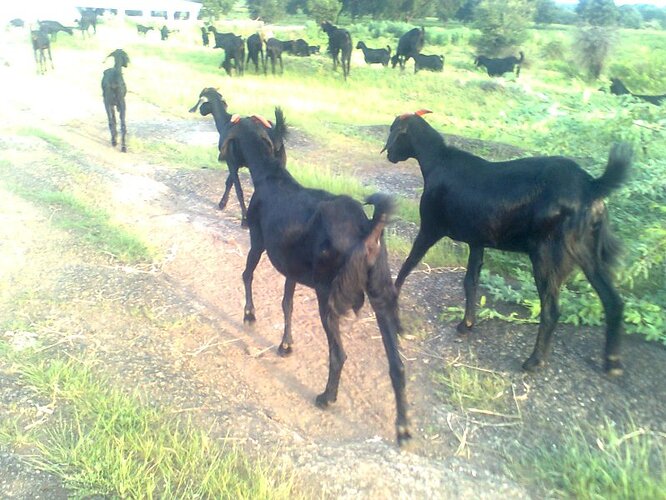A) INTRODUCTION ABOUT GOATS :-
----------------------------------------------------
Goat is a multi functional animal and plays a significant role in the economy and nutrition of landless, small and marginal farmers in the country. Goat rearing is an enterprise which has been practiced by a large section of population in rural areas. Goats can efficiently survive on available shrubs and trees in adverse harsh environment in low fertility lands where no other crop can be grown. In pastoral and agricultural subsistence societies in India, goats are kept as a source of additional income and as an insurance against disaster. Goats are also used in ceremonial feastings and for the payment of social dues. In addition to this, goat has religious and ritualistic importance in many societies.
B) BREEDS OF GOAT :-
India has 20 discreet breeds of goats out of the globally identified 102 breeds. The Indian breeds are evolved through natural selection for adaptation of specific agro - ecological conditions. Important breeds like Jamunapari and Barbari are reared in central parts of India. Black Bengal and White Bengal in Eastern regions and Sangamneri and Malabari in Deccan, Osmanabadi in Westerns Plateau and Coastal areas. The Goat has its authorative place under all production system. It is the only species that can be successfully farmed with any level of intensification.
C) ADVANTAGES OF GOAT FARMING
The initial investment needed for Goat farming is low.
Due to small body size and docile nature, housing requirements and managerial problems with goats are less.
Goats are friendly animals and enjoy being with the people.
Goats are prolific breeders and achieve sexual maturity at the age of 10-12 months gestation period in goats is short and at the age of 14-16 months it starts giving milk. Twinning is very common and triplets and quadruplets are rare.
In drought prone areas risk of goat farming is very much less as compared to other livestock species.
Unlike large animals in commercial farm conditions both male and female goats have equal value.
Goats are ideal for mixed species grazing. The animal can thrive well on wide variety of thorny bushes, weeds, crop residues, agricultural by-products unsuitable for human consumption.
Under proper management, goats can improve and maintain grazing land and reduce bush encroachment (biological control) without causing harm to the environment.
No religious taboo against goat slaughter and meat consumption prevalent in the country.
Slaughter and dressing operation and meat disposal can be carried without much environmental problems.
The goat meat is more lean (low cholesterol) and relatively good for people who prefer low energy diet especially in summer and sometimes goat meat (chevon) is preferred over mutton because of its “chewability”
Goat milk is easy to digest than cow milk because of small fat globules and is naturally homogenized. Goat milk is said to play a role in improving appetite and digestive efficiency. Goat milk is non allergic as compared to cow milk and it has anti-fungal and anti bacterial properties and can be used for treating uro genital diseases of fungal origin.
Goats are 2.5 times more economical than sheep on free range grazing under semi arid conditions.
Goat creates employment to the rural poor besides effectively utilizing unpaid family labour. There is ample scope for establishing cottage industries based on goat meat and milk products and value addition to skin and fiber.
Xv ) Goat is termed as walking refrigerator for the storage of milk and can be milked number of times in a day.
